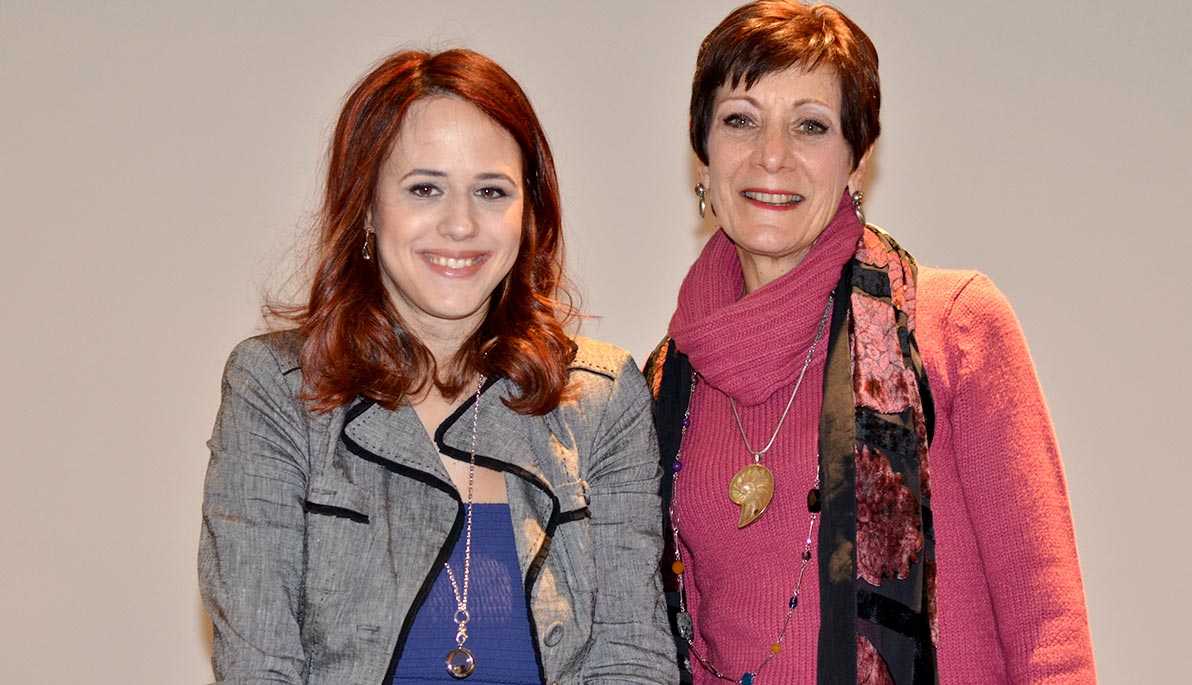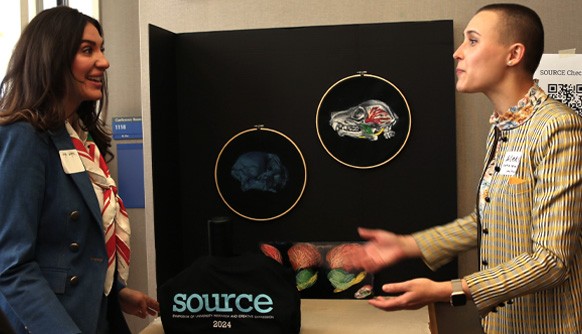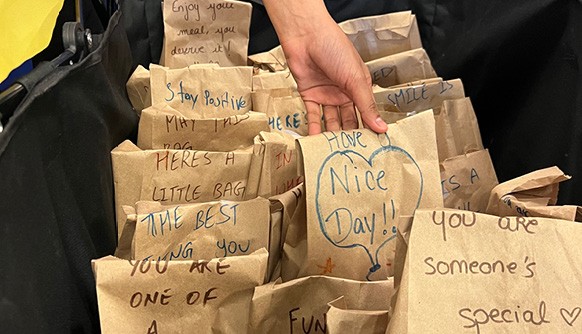News
Spinal Cord Injury Survivor Shares Her Story
March 3, 2016
PHOTO: Guest speaker Valerie Goldstein with NYIT School of Health Professions Dean Patricia Chute, Ed.D.
A head-on collision following a typical trip to the mall forever changed Valerie Goldstein's life.
On a late spring evening in 2000 when she was a high school senior, Goldstein was riding in the passenger seat of her boyfriend's car as they drove home from Smithhaven Mall in Suffolk County, N.Y. While Goldstein was wearing a seat belt, her two younger sisters in the back seat were not.
The accident on Route 347 happened long before airbags were standard. "The impact broke my neck; I knew immediately," said Goldstein, who paramedics had to pry out of the car wreck with the Jaws of Life hydraulic rescue tool. "I remember looking down and not being able to move anything. I remember saying, 'Oh my gosh, I'm going to be paralyzed for the rest of my life.' "
Goldstein shared her story on March 1 as part of the Dean's Speaker Series hosted by NYIT School of Health Professions Dean Patricia Chute, Ed.D. The presentation focused on "Perseverance and Perspective: A Patient's Viewpoint and Journey within the World of Medicine." Assistant Professor of Physical Therapy Rosemary Gallagher, D.P.T., and Goldstein's sister Melissa Cuda (D.P.T. '11), who was also in the car wreck, helped to arrange the visit.
Goldstein spoke about overcoming the initial effects of her injuries through a complex spinal fusion surgery that lasted 12 hours and an intense therapy program at the Kessler Institute for Rehabilitation in New Jersey.
"Now I have patchy sensation everywhere," said Goldstein. "I can feel things, in some places less than others. I walk with permanent crutches. If I feel courageous, I'll use only one."
She hoped that by sharing her story she would help medical professionals and students better understand how to treat patients with spinal cord injuries. "I want to give people information on things they just don't know," she said.
Cuda, who was less severely injured in the crash, says most therapists can easily understand how a patient might appear with an ankle sprain or shoulder injury. But, she added, "it takes a deep level of understanding" about how a patient's body or life is affected by a spinal cord injury—and exposing tomorrow's therapists to a real-world case is crucial as they enter their clinical phase of education.
The Long Road to Recovery
The days and months after the crash were sobering for Goldstein, a track and cross country team captain who was injured just before her high school graduation and the start of college.
"I remember the last race I ever ran," she said. "I ended up setting my personal record."
Instead of attending Stony Brook University that fall, Goldstein spent eight months at Kessler. For hours each day, occupational and physical therapists worked with her limbs.
"I cried so much because it was really, really hard and sometimes I'd see someone doing better than me," she said.
The challenges motivated Goldstein to work harder. She even practiced using a walker in the hallways at night, long after her therapists went home. She thinks her physical strength from running, along with a mental toughness (which she developed in part with the help of her high school coach), propelled her to work out more and handle the difficult days. After she was discharged, she continued going to Kessler as an outpatient for nearly two years.
In 2001, Goldstein enrolled as a part-time student at Stony Brook University. Two years later, she started driving again, this time in a car equipped with hand controls. She graduated in 2007 with a degree in psychology and later received a graduate degree in social work. She is the mother of three children all under the age of four.
Goldstein said her sense of optimism has helped her overcome the challenges facing what she calls being "a differently-abled" woman. She writes about her experiences on her blog at myfiretoinspire.blogspot.com. By speaking publicly about her experiences, Goldstein shared lessons learned from her recovery, particularly the need for therapists to have a good bedside manner when dealing with patients with spinal cord injuries. During a Q&A session following her presentation, an audience member asked: "What's the best way for health professionals to offer assistance without making a patient feel too dependent?"
"Ask your patient how she feels," said Goldstein. "Always communicate and know her goals for recovery."




